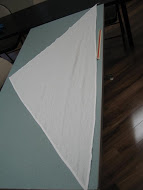Every home and car should have a first aid kit, and while it is not unusual

for the kits to slightly vary in contents, this article will list the ten essential first aid items in every kit. First aid kits vary in purpose, whether it is a basic kit for the household or for engaging in sports or other activities. Nevertheless, every kit should contain the following items: first aid manual, tweezers, alcohol swabs, antibiotic ointment bandages, gauze pads, medical tape, elastic bandage, medications, and cold/ hot packs.
1. First Aid Manual
- Teaches individuals how to properly treat and manage wounds, sprains, bites and other common health issues
- Better if coupled with First Aid Courses for better recall in cases of accidents or emergencies.
2. Tweezers
- Important basic tool
- Used to remove debris, such as dirt, splinters or glass from a wound
- May also be used to remove stingers from bee stings
3. Alcohol Swabs
- Used to clean infected or wounded area before giving antibiotic treatment or placing bandages
- May also be used to sterilize tools
4. Antibiotic Ointment
- Helps ensure proper healing of wounds while avoiding infections
5. Bandages
- Adhesive bandages should be present in multiple sizes for different wound sizes
- Traditional size is most commonly used
- May be used as a dressing or splint
6. Gauze Pads
- Should be present in multiple sizes
- May be used as either a bandage or to absorb blood of bleeding wounds
7. Medical Tape
- Used to secure gauze pads or wraps in place when used as a bandage
- Designed not to leave behind residue
- May also use a duct tape
8. Elastic Bandage
- Aids in immobilising bone and soft tissue injuries and reducing swelling
- Typically comes with a hook-and-loop or metal fasteners to secure in place.
- Usually placed on joints, such as wrists, elbows, ankles and knees
9. Medications
- Should bring a variety of medications that can be used for many different situations
- Pain medications, both aspirin-based and non-aspirin, to help relieve of pain
- Antihistamines for allergic reactions; and for cases with individuals prone to anaphylaxis (severe allergic reaction), epinephrine injections
- Asthma inhaler for individuals with asthma
- Saline solution for eye injuries
- Antidiarrheal and anti-constipation
- Oral electrolyte replacement solution, such as Gatorade, etc.
10. Cold/ Hot Packs
- Cold packs are typically used to reduce swelling
- Heat packs are used to ease pain several days after injury
It is not unusual for first aid kits to slightly vary in contents but every first aid kit should have the ten most essential first aid items, which include: first aid manual, tweezers, alcohol swabs, antibiotic ointment, bandages, gauze pads, medical tape, elastic bandage, medications, and cold/ hot packs. For outdoor and wilderness adventures, read more to learn about essential first aid items. To learn more about first aid kits and the essential items, enroll in First Aid Courses.
Online Source: